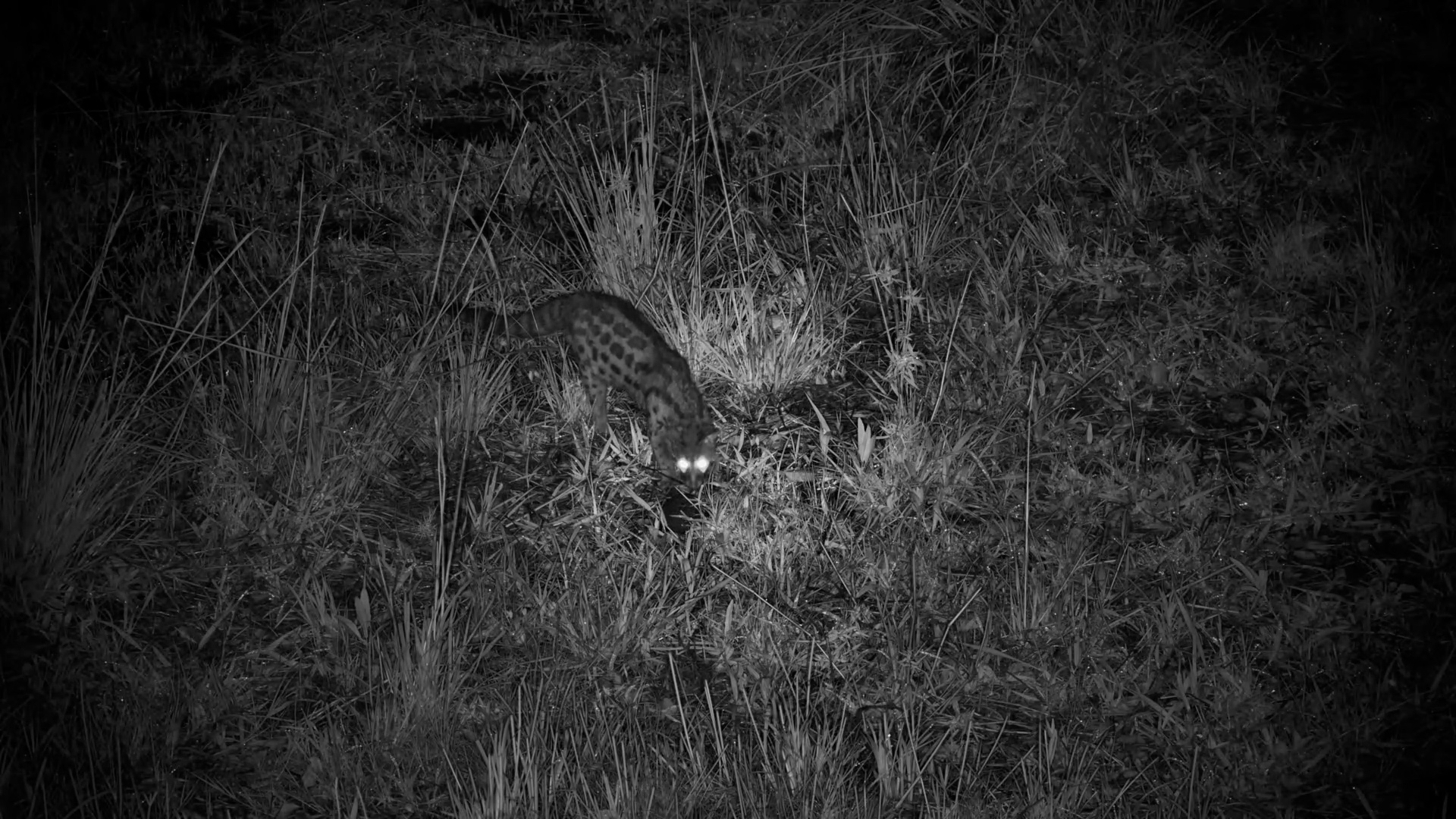Email: info@africam.com
The Foxes of Moela
June 20th, 2025
Posted in: The Wild Side
A First for Africam!
A new and exciting critter was recently spotted on the Moela camera for the first time – the elusive Cape Fox! The Cape Fox (Vulpes chama) is a small, slender canid native to southern Africa. They have a distinctive silvery-grey coat with a bushy, black-tipped tail and large, pointed ears that help dissipate heat in the arid environments they inhabit. Their graceful build and alert posture give them a fox-like elegance, well-suited to their role as a stealthy nocturnal predator.
Cape Foxes are solitary and primarily nocturnal, becoming active at dusk and resting during the day in burrows or dense vegetation. They are highly adaptable and inhabit a wide variety of dry environments, including open savannas, semi-arid scrublands, and grasslands throughout South Africa, Namibia, and Botswana. Omnivorous by nature, their diet includes small mammals, insects, birds, reptiles, and fruit. Being opportunistic feeders, they adjust their diet based on seasonal availability, making them resilient survivors in some of Africa’s harshest landscapes.

Bat-eared Foxes
Another secretive creature recently seen on the Moela camera is the Bat-eared Fox! The Bat-eared Fox (Otocyon megalotis) is a small, distinctive canid easily recognized by its oversized ears, which can measure over 13 centimeters long. These large ears not only give the fox its name, but also aid in thermoregulation and detecting prey underground. This fox species has a pale to greyish-brown coat, a dark face mask, and black legs and a black tail.
Bat-eared Foxes are primarily found in open, arid regions such as savannas and grasslands in eastern and southern Africa. Unlike most other foxes, they are highly insectivorous, with up to 80–90% of their diet consisting of termites and other insects, which they locate using their acute hearing. They also occasionally consume small mammals and fruit. These foxes are social animals, and they are often seen in monogamous pairs or small family groups. They are mostly nocturnal, but may be active during cooler daylight hours in regions where termites are more accessible during the day. Their unique diet and social behavior make them a fascinating example of ecological specialization among African canids.

Spot the Difference
Considering these two creatures are similar in appearance and are found in the same habitat, they can be difficult to distinguish between on the Africam cameras – especially at night when they are most active! So here are a few tips to help you tell the difference:

Why don’t you put your newfound knowledge to the test by playing SafariSnaps? Check out the Moela Livestream on the Africam website, and see if you can spot the difference between these two nocturnal animals!







